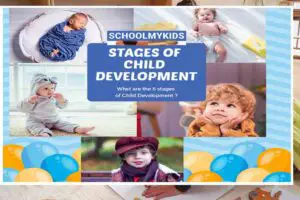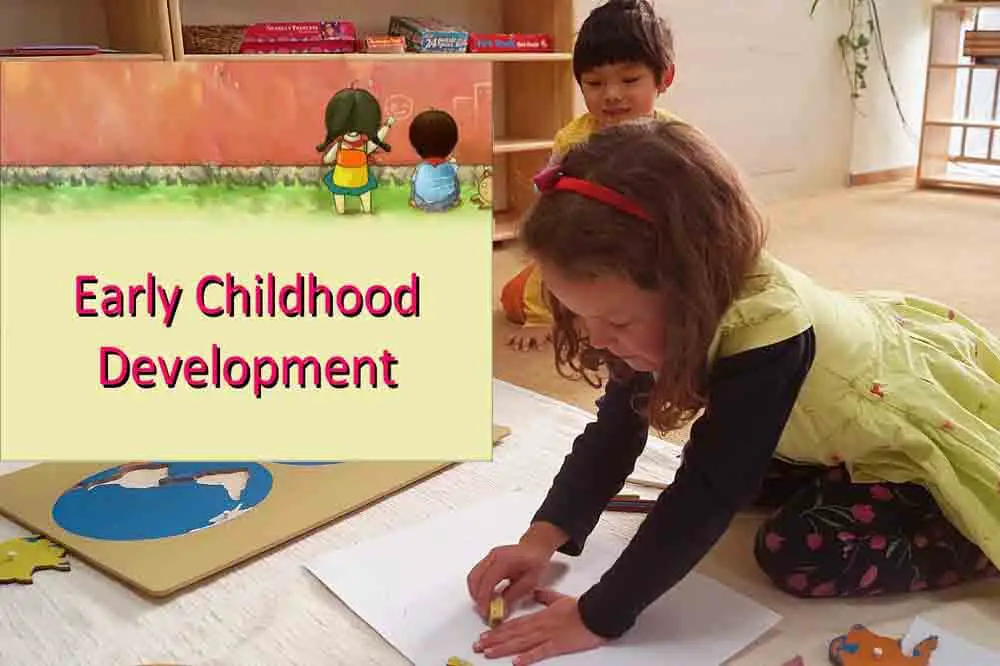Early childhood development
Approaches to and understanding of early childhood care varies from culture to culture and is affected by several factors ranging from local traditions to family structure to national policy and its implementation in country wide schooling systems. While there is no established model of early childhood provision that must be must be adopted universally, there are classification criteria and minor differences in approached that need to be addressed before we process further with advocating the need for these provisions.
Definitions
Early childhood development
It is generally accepted that early childhood activities are not confined to pre-schooling alone, and concern that holistic well-being and development of a child. However, different organizational initiatives very in their use of terminology for early childhood provisions. ECE (Early childhood Education) and ECCE (early childhood care and education) are often used interchangeable, with ECE denoting pre-primary education provided in schools; focusing on method of joyful learning alone and early childhood care and education) (ECCE) ideally being inclusive of health and nutrition provisions as well. Early childhood development (ECED) again, is an often similar term for ECCE; concentrating on the integration of health and education provision to the 0-8 age group with emphasis on child and mother/ post-natal care as well (Evans and Myers, 2000 and Penn, 2024).
UNESCO Global Monitoring Report (2007)
Early childhood development
According to the UNESCO Global Monitoring Report (2007), Early childhood development (ECCD) entails “health nutrition, hygiene, and cognitive, social, physical and emotional development – from birth to entry into primary school in formal, informal and non-formal settings, often provided by a mi of government institution, non-governmental organizations, and private providers, communities and families.
Early childhood development (ECD) supports/ helps the children / kids development from birth to age of five (5). It includes many programs and services that supports / help nurturing care including health, nutrition, play, learning and protection which is discussed.
Its involvements address four developmental domains / areas of a growing child – physical, cognitive, linguistic and socio-emotional development.
Early childhood development
Why is it important?
By the starting time when a kid reaches near five years old, ninety percentage (90%) of the brain has already settled – It means the development from birth to school is the most important time of their lives.
Children or kids from poorer and marginalized homes who are not able to access support are put at a different disadvantage. If child start school at the age of five without early years’ support, they will have a limited vocabulary and skill to learn.
The Evolving differences between those kids who have what they need for fit his / her brains and bodies and those who do not can show up as early as age of (9) nine months. The effects of inadequate care, nutrition and cognitive stimulation during the age of early months and years can last a lifetime.
THE Five 5 STAGES OF CHILD DEVELOPMENT

1. Newborn
2. Infant
3. Toddler
4. Preschool
5. School age
1. NEWBORN
During the staring first month of life, newborns exhibit automatic responses to external/ outer stimuli. In other words, we can say that a new-born will turn her head toward your hand when you stroke her cheek or grab your finger when you place it in her hand. A newborn is capable to see close up objects, identify certain smells, smile or cry to specify a need, and move her head from side to side.
2. INFANT
Infants grow new skills quickly in the staring of first year of life. At three (3) to six (6) months, an infant can control his head activities and bring his indicators together. By six (6) to nine (9) months old, an infant can sit without support, babble and respond to his name. Between nine (9) and twelve (12) months old, a baby can pick up items, crawl and even stand with support.
and twelve (12) months old, a baby can pick up items, crawl and even stand with support.
3. TODDLER
As children reach the ages between one (1) and three (3) years, toddlers learn to start the walk without help, climb stairs and jump in place. They can hold/ grip a crayon, draw a circle, line or we can say draw a different shapes, stack one block on top of another, use short sentences and even follow simple instructions.
4. PRESCHOOL
Between the ages of three(3) and five (5) years, children improve their motor skills. They can throw a ball overhand, skip and hop, stand up on one foot for ten (10) seconds or more, dress themselves, and draw a person with features.
5. SCHOOL AGE
School age children / kids are six(6) to 12 twelve years old. They are skilled, confident, self-governing and answerable. Peer relations, mainly relationships with friends of the same gender, are important to school age children/ kids.
Five Important / main key areas
Early childhood development
1. Nutrition
2. Health
3. Play
4. Learning
5. Protection
1. Nutrition
The (ECD) Early childhood development with nutrition help for little kids / babies and toddlers, nursing mothers. Even pregnant women, since roughly twenty percentage (20%) of chronic malnutrition begins before birth due to maternal malnutrition. The starting early year’s programs that support adequate nutrition include promoting/ helping exclusive breastfeeding for the first six months, providing food and nutrient supplements to mothers and older toddlers, and making sure children / kids have access to clean fresh water and sanitation facilities.
2. Health
For the young children is access to health care, from the starting with ante- and postnatal visits for pregnant women, a skilled/ able birth attendant, and including vaccinations, handling of chronic and acute illness, and daily routine checkups. Nutrition and health interventions go hand-in-hand with support / help for water and sanitation, which safeguards good/ decent nutrition and prevents deadly bacterial infection. These interventions include access to clean drinking water, hand washing practices, toilet facilities and proper disposal of diapers.
3. Play
Chances for play and initial learning are just as important to healthy growth as physical support. For babies/ kids and toddlers, this means intercessions to support regular nurture and responsive communication or “serve and return” interactions with adults/ young, including home visits, exercise for caregivers, and access to quality childcare. For older children, preschool programs are important opportunities for early learning, play, and increasing social and emotional skills that underpin success in primary school level.
4. Learning
The latest report by the Education Commission presented that pre-school education is best-proven practices for increasing contribution and learning. The report of Education commission said that participation in quality pre- primary programs increases the chance of primary school attendance and cuts grade repetition and falling out. For good quality, preschools also recover school readiness and can lead to good primary school outcomes/ result, mostly for poor and disadvantaged students.
5. Protection
Last is protection the Child protection is a very important component of ensuring / certifying the healthy early development. This starts with the time of registration at birth, so that children/ kids have proper legal standing and are certain access to services such as education or other. Child protection (CP) also includes confirming young children do not experience violence from the caretakers, or endure constant uncertainty and violence in their surroundings.
For Newspaper Jobs Click Here

